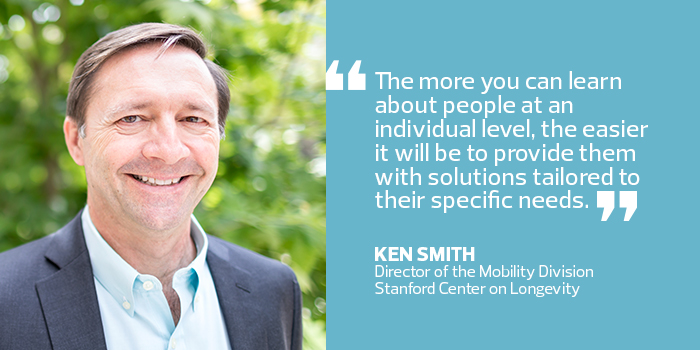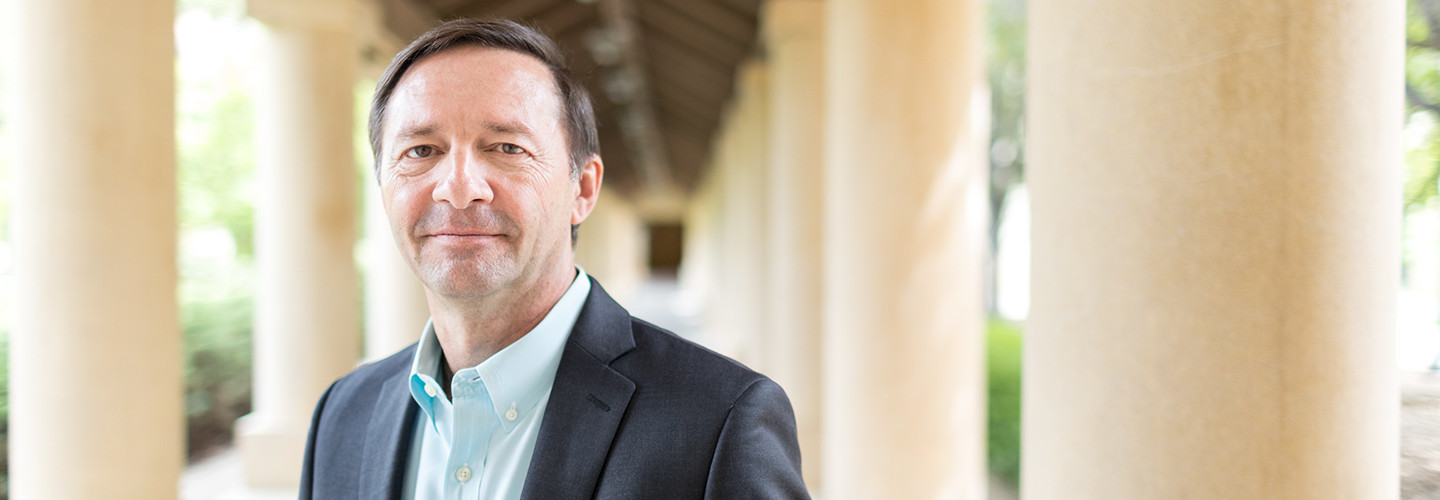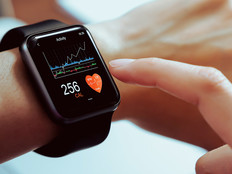Q&A: Stanford Center on Longevity's Ken Smith Talks Tech's Role in Senior Living
Ken Smith, director of the mobility division at the Stanford Center on Longevity, believes that improving aging necessarily entails helping people thrive as they grow older. From a technology perspective, that means creating and leveraging tools that help people to form and practice good exercise, nutritional and social habits well before old age.
The time to start thinking about being physically active to ensure a long and healthy life is not when you turn 70; learned behaviors set individuals up for a more positive aging experience, Smith says.
HealthTech spoke with Smith about the center’s annual design challenge, which recently focused on aging in place, and how senior living facilities must incorporate technology to evolve.
SIGN UP: Get more news from the HealthTech newsletter in your inbox every two weeks
HEALTHTECH: What technology solutions stood out to you from the 2016-2017 design challenge?
SMITH: It was really impressive how broadly people interpreted aging in place. The winning team created a sleeve for people who suffer from hand tremors. It senses the frequency of a tremor and temporarily stabilizes it by sending direct electrical stimulation at an opposite frequency.
Say you’re walking around the house and want to pick up a glass of water, but you’re afraid of dropping the glass because of tremors. With the sleeve, you could turn it on, pick up the glass and turn it off afterward. It allows you to continue to live a normal life.

The second-place finisher looked at virtual reality that allows seniors to experience events they might not be able to otherwise. In the case of recorded VR, that’s how you would more traditionally think of virtual reality; you’re alone in your home, but you want to be able to have the experience of, say, walking through Venice. You could do something you wouldn’t normally be able to do because of your physical condition. This team stood out because they also are playing with real-time VR using cameras that can take 360-degree video. So let’s say you are an older person and somebody is having a wedding on a beach 3,000 miles away. You wouldn’t have to miss it; you could have somebody put on this camera at the wedding and you could be there in real time. Or you wouldn’t miss Christmas morning and your grandchildren opening their presents.
HEALTHTECH: Last year you convened a conference on the concept of a 24-hour activity cycle. From a technology standpoint, what were your takeaways from that meeting?
SMITH: For individuals, a lot of their activity doesn’t necessarily come from traditional exercise. Instead, it comes from tasks like gardening and housework, things we don’t really focus on as measurable, although there’s a growing consensus that individuals can get a lot of health benefits out of a lower level of activity. But there isn’t really a great consumer device out there that measures all aspects of a day, including the interactions between activity and sleep. We want to try to encourage that and catalyze development of such a tool. As for the devices that are currently available, the barrier we’re running into is that we can’t accurately decipher the quality of the data created because of the way businesses have developed.
In general, the wearable devices and activity trackers available provide a good sense of your general activity level. But each company takes the data it acquires from its wearable devices and runs it through proprietary algorithms to push out high-level data to consumers on the interface. While one company may tell you that you completed so much activity or you did so much sitting around, researchers can’t see the algorithms used to determine that conclusion. That makes the information difficult to validate. We can’t compare data points because we don’t actually know what each point means in terms of real activity.
HEALTHTECH: What do senior living facilities need to do to better serve their residents?
SMITH: They need to leverage technology to provide better care with fewer resources. While the number of older people is rising, there isn’t necessarily a growing number of caregivers. They need tools that will allow them to quickly understand their customers’ physical needs so they can focus more time on the emotional aspects of caregiving.
There’s an opportunity to push the technology frontier in ways that couldn’t necessarily occur for the general population, since many residents are already in a situation where they want to be monitored regularly.
HEALTHTECH: What can the senior living and healthcare industries take away from the work you’re doing?
SMITH: The more you can learn about people at an individual level, the easier it will be to provide them with solutions tailored to their specific needs. I have high hopes for tools coming down the pipeline.
Let’s say, for instance, you can get real-time glucose monitoring through sweat analysis so that you don’t have to stick a person with a pin to measure his or her blood; that could make it easier to study whole populations.







